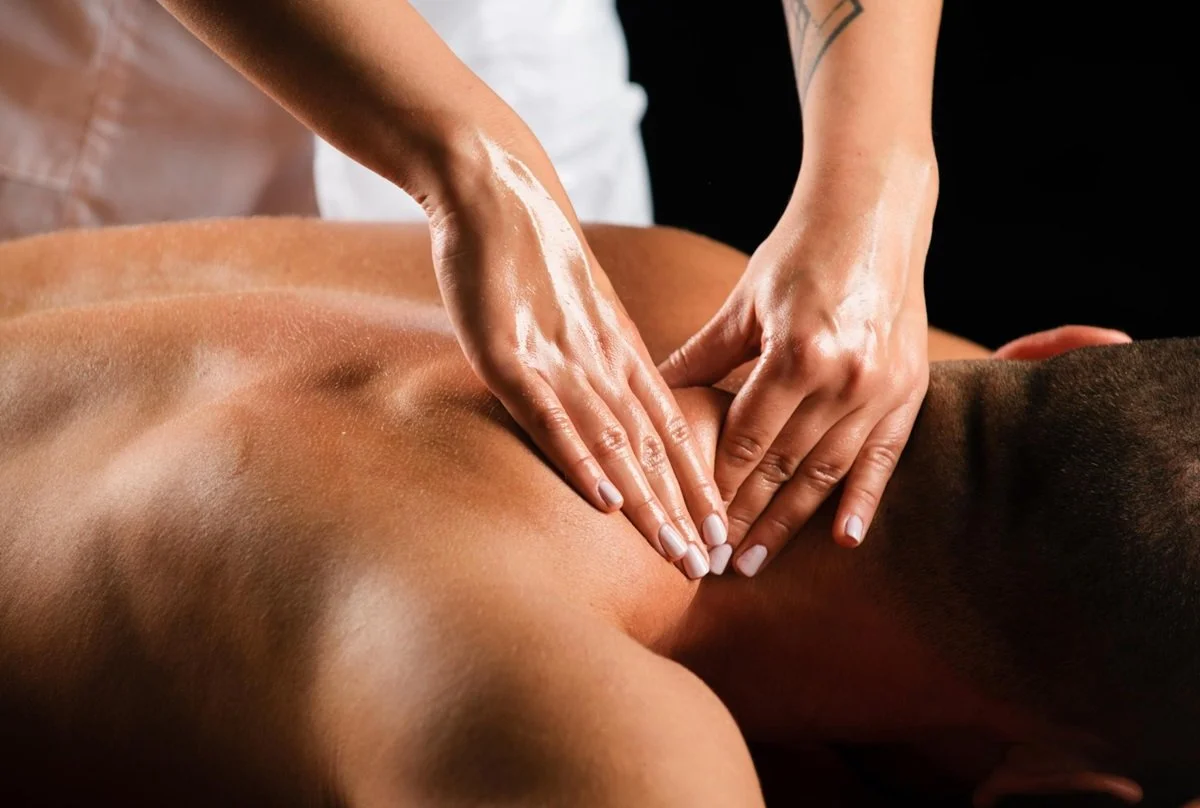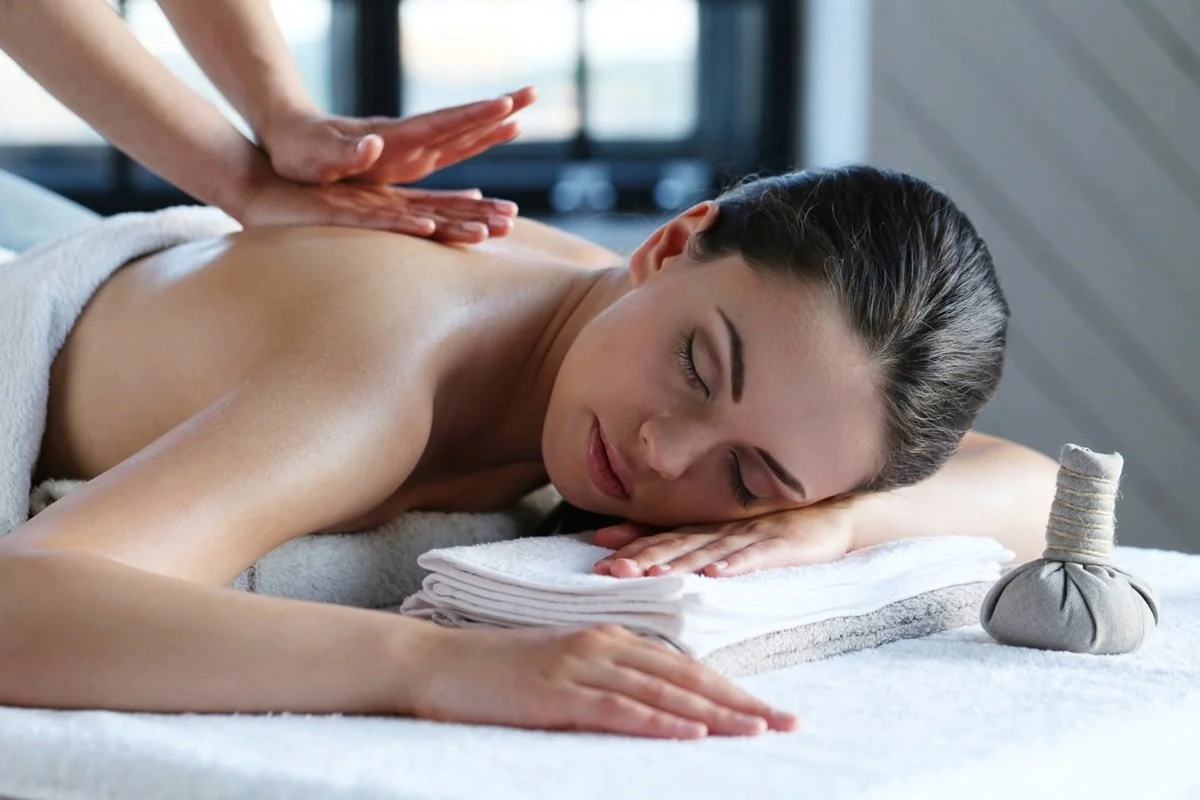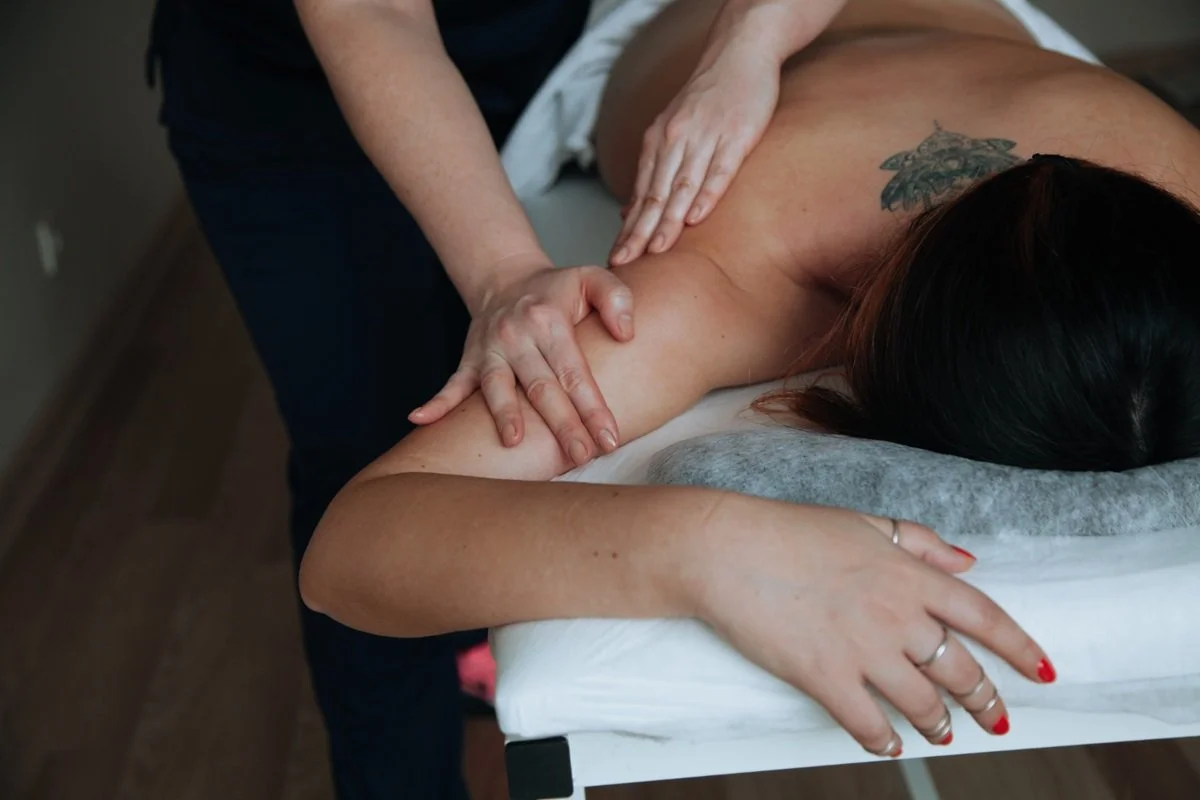What Is a Sports Massage? Benefits, Techniques, and Tips
If you've ever experienced the soreness that comes after a workout or an intense sports session, you know how important it is to focus on recovery. Muscle fatigue, stiffness, and soreness are all part of the process, but the good news is that sports massage therapy is a powerful tool to help you feel better faster. Whether you're an athlete or enjoy regular physical activity, a sports massage can significantly enhance your performance, speed up recovery, and prevent injury.
In this blog, we’ll dive into sports massage, its benefits, techniques, and tips for choosing a sports massage therapist near you in Culver City. Whether you're dealing with muscle tension, recovering from a sports injury, or aiming to improve your overall flexibility, this guide will provide you with the information you need to make the most of sports massage therapy.
What Is a Sports Massage?
Sports massage is a specialized therapy that targets the muscles and tissues most used during physical activity. Designed to enhance athletic performance and accelerate recovery, it addresses muscle soreness, stiffness, and injury prevention. If you’re an active individual looking to improve flexibility or recover from an intense workout, sports massage could be just what you need.
Defining Sports Massage Therapy
Sports massage therapy is a specialized form of bodywork that targets muscle groups commonly used during physical activity, helping to improve circulation, flexibility, and muscle recovery. Unlike other types of massage, such as Swedish massage, sports massage focuses on enhancing athletic performance and preventing injuries by addressing muscle soreness, muscle tension, and musculoskeletal issues.
Sports massage therapists use various techniques to manipulate soft tissues and muscles, including myofascial release, deep tissue techniques, and trigger point therapy, depending on the individual’s needs. By focusing on targeted areas, sports massage can help reduce muscle fatigue and tension, accelerate tissue repair, and maintain or improve range of motion.
How Sports Massage Differs from Other Massage Techniques
Sports massage stands apart from other massage types, such as Swedish massage or relaxation massages, due to its focus on athletic individuals and active recovery. While Swedish massage uses long, soothing strokes to promote full-body relaxation, sports massage incorporates more specific techniques such as muscle kneading, joint mobilization, and deep tissue manipulation. These techniques are designed to target the deeper layers of muscle and connective tissue, addressing muscle pain and stiffness, increasing blood flow, and promoting scar tissue breakdown. Additionally, sports massage therapy works on the biomechanics of the body to improve posture, flexibility, and muscle function—key aspects for athletes who want to avoid injury and maximize performance.
What Are the Benefits of a Sports Massage?
Sports massage is a popular treatment among elite athletes and is becoming increasingly common among age-group and amateur athletes. As a result, it has evolved into a multi-million-dollar industry, with a growing number of professional therapists and massage devices dedicated to improving athletic performance and recovery. One of the key benefits of sports massage is its ability to reduce post-exercise fatigue symptoms. Studies have shown that it accelerates recovery by helping to alleviate muscle soreness and muscle tension, allowing athletes to return to their training regimens more quickly.
Physical Benefits: Recovery, Injury Prevention, and Performance Boost
Sports massage provides a wide range of physical benefits for those who engage in regular physical activity. It enhances muscle flexibility, promotes muscle relaxation, and aids in removing metabolic waste, which helps reduce muscle soreness and inflammation. One of the primary benefits of sports massage is recovery acceleration, which decreases the time needed for muscles to repair themselves after intense workouts.
Through myofascial release, trigger point therapy, and soft tissue manipulation, sports massage can break down adhesions in the fascia (the connective tissue around muscles), improving circulation and blood flow. This aids in muscle tissue regeneration, helping athletes recover faster and return to their training regimen with less discomfort and increased range of motion. Sports massage also plays a crucial role in injury prevention by improving tissue elasticity and joint function. Regular sessions can help reduce the risk of overuse injuries and promote overall musculoskeletal health.
Mental Benefits: Stress Relief and Focus Improvement
In addition to the physical advantages, sports massage has significant mental benefits. Many athletes report improved mental focus and enhanced concentration after a session. Muscle relaxation during a massage helps relieve stress, reducing anxiety and promoting a sense of calm. A relaxed state can improve mental clarity, allowing athletes to perform better during training and competition.
Sports massage is also effective for addressing mental fatigue. As the body relaxes and muscle tension is reduced, the mind can better concentrate on the task at hand, whether it’s a long run, an intense workout, or a sport-specific skill.
Who Can Benefit: Athletes, Fitness Enthusiasts, and Everyday Individuals
While sports massage is often associated with athletes, anyone who engages in physical activity can benefit from these therapeutic techniques. This includes fitness enthusiasts, weekend warriors, or even individuals experiencing musculoskeletal issues due to poor posture or sedentary behavior.
If you spend long hours sitting at a desk, sports massage can help alleviate muscle tension, improve circulation, and enhance flexibility. Whether you're dealing with soreness after a workout or simply want to maintain optimal muscle function, sports massage can help you stay at your best.
What Does a Sports Massage Involve?
The effects of sports massage on flexibility are particularly notable. Research consistently shows a positive correlation between massage and improved flexibility, significantly increasing the range of motion in targeted muscle groups. This makes sports massage an effective alternative to enhancing flexibility, which can be essential for athletes and fitness enthusiasts. The improvement in flexibility enhances performance and plays a crucial role in injury prevention by increasing muscle elasticity and reducing stiffness.
Techniques Used in Sports Massage Therapy
Sports massage uses several techniques to address muscle soreness, tension, and other musculoskeletal issues. Effleurage involves long, gliding strokes to warm up muscles and improve blood flow. Petrissage uses kneading to release deep tension and enhance circulation. Deep friction techniques apply pressure to break down adhesions and scar tissue, while trigger point therapy targets tight spots to alleviate knots. Myofascial release focuses on easing tension in the fascia, and stretching techniques help improve flexibility and range of motion. Each technique is applied strategically to target specific muscle groups and address the individual needs of the client. Whether you’re seeking muscle recovery or injury prevention, sports massage therapists customize each session to maximize benefits.
What to Expect During a Session
During your sports massage therapy session, the therapist will evaluate your posture and assess any areas of tightness or discomfort. Based on this evaluation, the therapist will select appropriate techniques to address your concerns. For example, if you’re dealing with muscle pain and stiffness in your back, the therapist may focus on deep tissue techniques to target that area.
Sports massage sessions typically last 30 to 90 minutes, depending on your needs. You may experience mild discomfort or soreness during certain parts of the session, especially if tight muscles or trigger points are being addressed. However, you should always communicate with your therapist if the pressure feels too intense. Post-session soreness is normal, but it usually dissipates within a few hours or days.
Sports Massage Therapy: Is It Right for You?
Sports massage therapy can benefit various individuals, from professional athletes to fitness enthusiasts and even people with chronic pain or muscle tension. It’s especially useful if you’re recovering from a sports injury, looking to improve your range of motion, or want to keep your muscles in top condition. But how do you know if it’s the right treatment for you? Let’s look at the ideal scenarios for sports massage therapy.
Ideal Scenarios for Sports Massage Therapy
Sports massage therapy is especially beneficial for individuals who engage in intense physical activity or sports. Whether you’re a runner, cyclist, weightlifter, or yoga practitioner, regular sports massage can help muscle recovery, injury prevention, and performance enhancement. It's also ideal for those experiencing muscle tension, soreness, or inflammation caused by repetitive movements or muscle imbalances.
Additionally, athletes preparing for a competition or event can benefit from pre-event sports massage to improve flexibility, increase circulation, and reduce muscle stiffness.
Conditions and Issues Addressed by Sports Massage
Sports massage therapy is highly effective in addressing various musculoskeletal issues and conditions. It helps relieve muscle soreness, such as delayed onset muscle soreness (DOMS), which often occurs after intense exercise. It also targets muscle tension, alleviating stiffness and tightness hindering movement. Additionally, sports massage therapy can address muscle weakness, improving the function of muscles that may be underperforming due to poor conditioning or injury. Sport-specific injuries, like tennis elbow, runner’s knee, or rotator cuff strains, can also benefit from targeted massage techniques. It is particularly useful for breaking down scar tissue from previous injuries, which can limit the range of motion. Furthermore, sports massage helps reduce inflammation and swelling, commonly found in joints after intense physical activity or injury. Sports massage therapy is an invaluable tool for addressing these conditions and promoting long-term physical health and mobility.
Are There Any Side Effects or Risks of Sports Massage?
While sports massage is generally safe, it’s important to be aware of any potential side effects or risks. Common side effects include soreness and mild bruising, especially if deep tissue techniques are used. However, understanding what to expect and taking the proper steps before and after a session can help minimize any discomfort and ensure the best possible results.
Common Side Effects
Though sports massage is generally safe, some side effects may occur, particularly when using deep tissue techniques. The most common side effects include temporary soreness or bruising in the treated areas, especially if adhesions in the fascia or muscle tissue are broken down. While mild soreness can be expected, it usually subsides within a few hours to a few days. If bruising occurs, it is generally not severe and fades quickly.
How to Avoid Risks with Proper Preparation
To reduce the risk of discomfort or injury, staying hydrated before and after your sports massage session is important. Hydration helps remove metabolic waste from your muscles and improves circulation. If you’re dealing with a specific injury or chronic pain, be sure to inform your therapist before the session so they can adjust their techniques accordingly.
How to Choose a Sports Massage Therapist Near Me
Choosing the right sports massage therapist is key to receiving the most effective treatment. Whether you need help with muscle recovery, injury prevention, or general performance enhancement, selecting a skilled and licensed massage therapist can make all the difference. Here’s a guide to help you find the right therapist to meet your needs.
Key Qualifications to Look For
When searching for a qualified sports massage therapist near Culver City, look for a licensed massage therapist specializing in sports massage therapy. A skilled therapist should have training in deep tissue techniques, myofascial release, trigger point therapy, and soft tissue manipulation. They should also be familiar with the biomechanics of the body and how to address sport-specific injuries.
Questions to Ask Before Booking an Appointment
Before booking a sports massage session, it's important to ask a few key questions to ensure you're choosing the right therapist. Inquire whether the therapist is certified in sports massage therapy or has training in treating sports injuries. Ask how they evaluate a client’s posture and muscle imbalances before starting the session to ensure a targeted approach. Additionally, confirm whether they can customize the massage techniques based on your needs. These questions will help the therapist understand your goals and create a personalized treatment plan.
Why Choose Victory Performance and Physical Therapy
Victory Performance and Physical Therapy offers a team of licensed and highly skilled sports massage therapists specializing in injury prevention, muscle recovery, and performance enhancement. With their personalized approach and focus on overall wellness, they are the ideal choice for anyone looking to recover from a sports injury, improve flexibility, or optimize their athletic performance.
How Often Should You Get a Sports Massage?
The frequency of sports massage treatment depends on your personal goals, activity level, and recovery needs. Regular sports massage treatment can help athletes maintain muscle health, prevent injuries, and improve flexibility. For others, occasional sessions may be enough to relieve muscle tension and promote recovery after intense physical activity.
Frequency Recommendations for Athletes
For athletes training intensely, getting a sports massage at least once or twice a week is recommended to prevent muscle fatigue, reduce soreness, and promote muscle flexibility. Regular sessions help improve recovery times and keep muscles in optimal condition, essential for peak performance. For those preparing for an event, getting a pre-event massage can help improve circulation and reduce muscle stiffness, ensuring that your body is primed for the physical demands ahead.
Recovery vs. Maintenance Sessions
If you're not an athlete but still engage in regular physical activity, one session every 2-4 weeks may be sufficient to maintain muscle health and prevent muscle soreness. For those who experience chronic muscle tension or engage in strenuous exercise, more frequent sessions can help manage muscle stiffness and improve flexibility. If you're recovering from an injury or muscle strain, more frequent sessions may be necessary to accelerate recovery and prevent future issues.
Additional Tips to Maximize the Benefits of a Sports Massage
To get the most out of your sports massage, taking a few additional steps before and after your session is important. Staying hydrated, incorporating stretching, and following proper nutrition can all help support the benefits of your massage. Let’s explore some tips that will help you maximize recovery and performance after your sports massage session.
Hydration and Nutrition Post-Massage
To maximize the benefits of sports massage, it's important to hydrate before and after the session. Drinking water helps flush out toxins and supports muscle tissue repair. Additionally, consuming a balanced post-workout meal with protein, healthy fats, and carbohydrates can support muscle regeneration and overall recovery.
Stretching and Exercise for Enhanced Recovery
Incorporating light stretching and exercise into your routine after a sports massage can enhance recovery. Dynamic stretching helps improve flexibility, while low-impact exercise promotes circulation and prevents stiffness from setting in.
Why Choose Victory Performance and Physical Therapy for Sports Massage Therapy?
Victory Performance and Physical Therapy offers tailored sports massage therapy designed to address the specific needs of athletes, fitness enthusiasts, and individuals recovering from injuries. With a team of skilled sports massage therapists, Victory Performance and Physical Therapy provides the highest quality care to help you achieve optimal performance, prevent injuries, and speed up recovery. If you’re ready to take the next step in enhancing your performance or recovering from an injury, contact us today to schedule your session and experience the benefits of personalized sports massage therapy.
Conclusion
Sports massage therapy is a powerful tool for athletes, fitness enthusiasts, and anyone looking to improve their physical performance and well-being. Sports massage can enhance recovery, reduce muscle fatigue, and promote long-term health by targeting muscle soreness, muscle tension, and injury prevention. For those in Culver City, Victory Performance and Physical Therapy offers expert sports massage therapy to help you achieve your fitness goals and maintain optimal physical performance.
FAQs
What is the difference between a massage and a sports massage?
While both types of massage focus on muscle relaxation, sports massage is specifically designed to target the muscles used in physical activity. It incorporates specialized techniques like myofascial release and trigger point therapy to address issues like muscle tension, injury prevention, and performance enhancement. Sports massage therapy is tailored to meet the needs of active individuals, helping them recover from exercise-related stress and improve overall muscle function.
How do I know if I need a sports massage?
If you're experiencing muscle soreness, stiffness, or fatigue after exercise, a sports massage can help accelerate recovery and relieve discomfort. Sports massage is also beneficial for improving flexibility and preventing injuries. If you engage in regular physical activity or have specific areas of tension or pain, a sports massage can help address those concerns and improve your overall performance.
Why is it called sports massage?
It's called sports massage because it is specifically designed to help individuals who engage in physical activity or sports. The techniques are tailored to address the unique needs of athletes, such as muscle recovery, injury prevention, and performance enhancement. Sports massage uses targeted methods to support the physical demands of the body during exercise and athletic performance.



